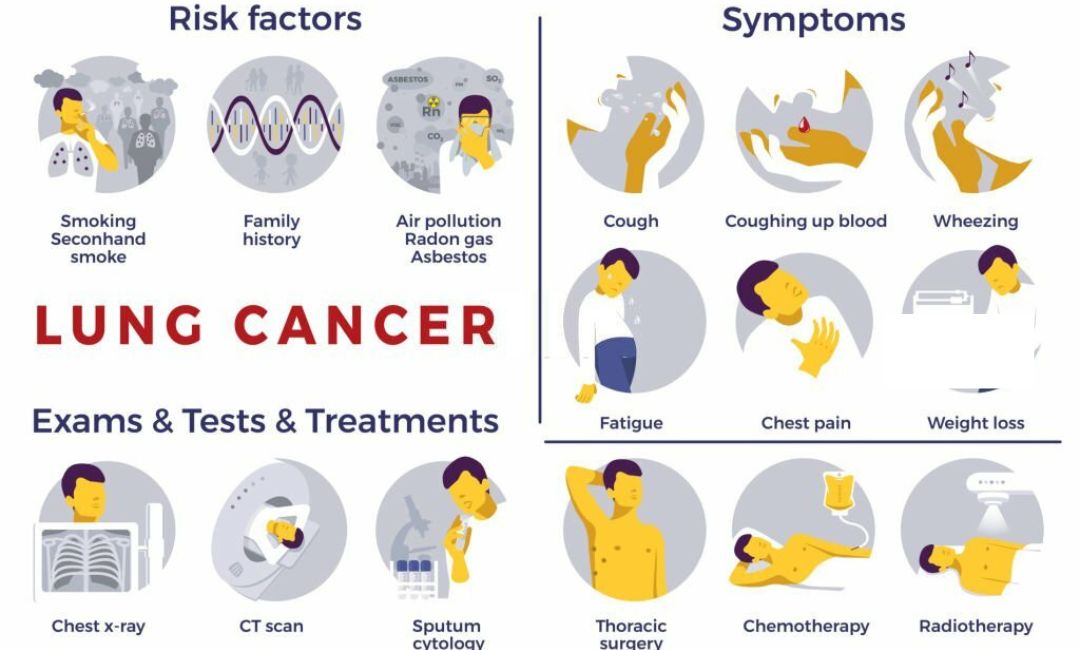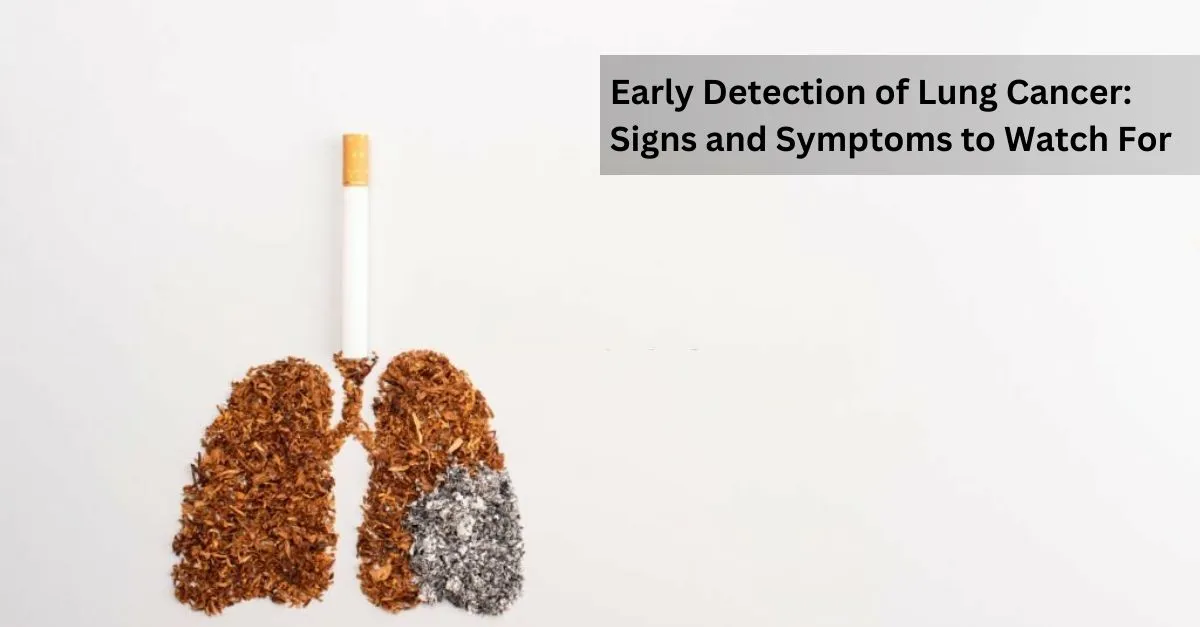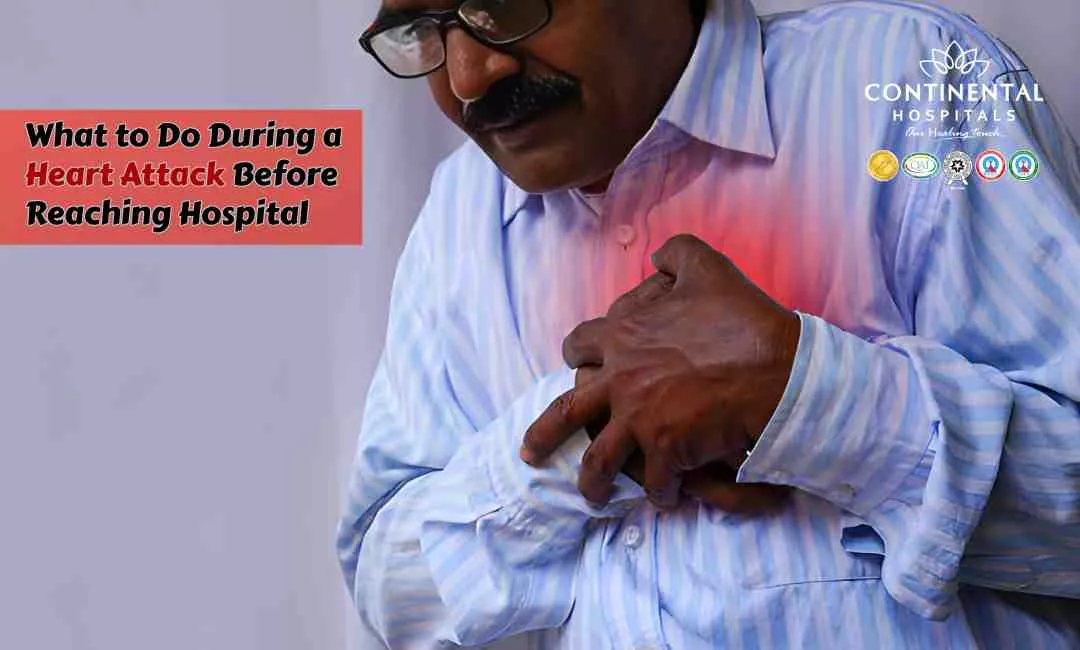Lung cancer is one of the most prevalent and deadly forms of cancer, affecting both men and women worldwide. While there have been substantial advancements in the diagnosis and treatment of this disease, early detection remains a crucial factor in improving survival rates. Understanding the early signs and symptoms, potential gender differences, and identifying high-risk groups is essential for promoting lung cancer awareness and prevention. In this comprehensive blog post, we'll explore these aspects in detail.
Early Signs and Symptoms of Lung Cancer
Persistent Cough:
A persistent cough is one of the most common early signs of lung cancer. This cough may be characterized by coughing up blood or mucus and can last for weeks, becoming progressively worse.
Shortness of Breath:
🥗 Healthy Plate Challenge
🍽 Add Your Favorite Dish
Pick Your 6 favorite foods, eat, and see the results.Drag & drop foods onto your plate.
Drop Food Here
Lung cancer can obstruct the airways, leading to shortness of breath or wheezing. If you notice a sudden and unexplained change in your ability to breathe, it's important to consult a healthcare professional.
Chest Pain:
Chest pain may occur in some cases of lung cancer, particularly if the tumor presses against nerves, the lining of the lungs, or other structures in the chest. This pain may be constant or intermittent.
Hoarseness:
Hoarseness or a significant change in your voice can be an early symptom of lung cancer, especially when the tumor affects the nerves controlling the vocal cords.
Unexplained Weight Loss:
Losing weight without a clear reason is often a red flag for various underlying health issues, including cancer. In the context of lung cancer, it's an important symptom to be aware of.
Fatigue:
General fatigue and weakness are common symptoms of many illnesses, including lung cancer. When accompanied by other symptoms, such as unexplained weight loss, it becomes more concerning.
Repeated Respiratory Infections:
Frequent respiratory infections like bronchitis or pneumonia could be indicative of a compromised immune system, possibly related to lung cancer.
Swelling in the Neck and Face:
In some cases, lung cancer can lead to the development of a swollen lymph node in the neck or face. This can be a visible sign of the disease.

If you are concerned about your risk or experience any of the mentioned symptoms, consult a Cancer Specialist for further evaluation and guidance.
Are Symptoms of Lung Cancer Different for Men and Women?
Gender-Based Differences:
While the symptoms of lung cancer are generally similar between men and women, there may be subtle differences. For instance, some research suggests that women may experience more frequent coughing and chest pain, while men may be more likely to have hoarseness as an early symptom.
Hormonal Influence:
Hormonal differences between men and women may play a role in the variation of symptoms. Estrogen, which is more prevalent in women, may have a protective effect against lung cancer, possibly leading to differences in symptom presentation.
Sociocultural Factors:
Sociocultural factors can also influence symptom recognition and reporting. Men, for example, are often less likely to seek medical attention for health concerns, which could contribute to late-stage diagnosis.
Smoking and Non-Smoking Lung Cancer:
Both men and women who smoke are at an increased risk of developing lung cancer. However, in recent years, there has been a rise in non-smoking-related lung cancer cases, and these cases are more evenly distributed between genders.
Diagnosis and Treatment:
Ultimately, the diagnostic and treatment pathways for lung cancer are similar for both men and women. Early detection and timely intervention are critical for improving outcomes, regardless of gender.
People at Higher Risk for Lung Cancer
Smoking:
The most significant risk factor for lung cancer is smoking. Both active smoking and exposure to secondhand smoke increase the risk substantially.
Age:
The risk of lung cancer increases with age, and the majority of cases are diagnosed in individuals over the age of 65.
Occupational Exposures:
Certain occupations, such as mining, construction, and asbestos-related work, expose individuals to carcinogens that can increase the risk of lung cancer.
Family History:
A family history of lung cancer may also elevate an individual's risk. If a close relative has had lung cancer, it's essential to be vigilant about potential symptoms.
Radon Gas:
Exposure to radon, a naturally occurring radioactive gas that can enter homes, is another risk factor for lung cancer. Testing and mitigating radon levels in homes can reduce this risk.
Prior Radiation Therapy:
Individuals who have previously undergone radiation therapy to the chest or breast may have an increased risk of developing lung cancer.
Other Lung Diseases:
Chronic lung diseases like chronic obstructive pulmonary disease (COPD) and pulmonary fibrosis can raise the risk of lung cancer.
Environmental Carcinogens:
Exposure to environmental carcinogens such as air pollution and industrial chemicals can contribute to the development of lung cancer.
Genetic Factors:
Some genetic mutations can predispose individuals to lung cancer. Genetic testing can help identify those at higher risk.
Conclusion:
Early detection is crucial in the fight against lung cancer. Recognizing the early signs and symptoms, understanding potential gender-based differences, and identifying high-risk groups are essential steps in improving outcomes. If you or someone you know is experiencing symptoms that raise concern, it's imperative to consult a healthcare professional for timely evaluation and diagnosis. Additionally, risk reduction strategies such as smoking cessation, radon testing, and genetic screening can help mitigate the chances of developing this life-threatening disease. By raising awareness and fostering a proactive approach, we can make significant strides in the battle against lung cancer.
If you are concerned about your risk or experience any of the mentioned symptoms, consult a Cancer Specialist for further evaluation and guidance.
Related Blog Article
.webp)














